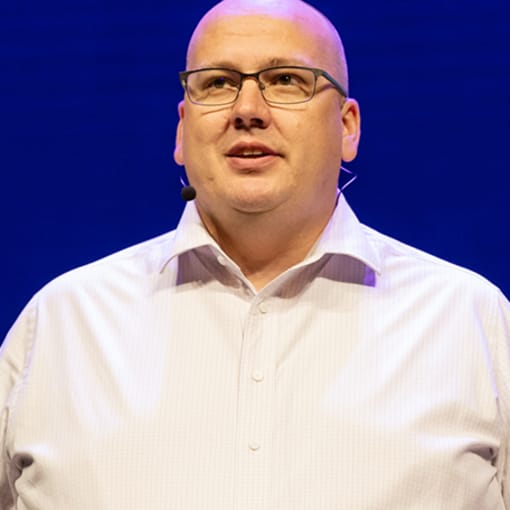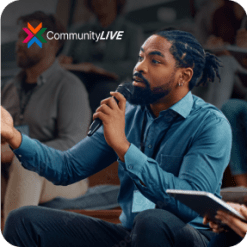How customer-focused teams can develop better products
Since 1999 John Phelan has held multiple roles at Hyland, including several leadership positions where he guided the team through significant growth and acquisitions. As the executive vice president and chief product officer, John leads Hyland’s efforts to support the development of products and solutions as part of Hyland’s plan to deliver the best content services platform in the industry.

Customer feedback can come in many forms, and translating that feedback into strategic software product design improvements can be a tricky task. But when you have teams made up of experts in the field across divisions, it can become much easier to deploy creative solutions.
We spoke with John Phelan, Executive Vice President and Chief Product Officer at Hyland, to learn more.
How does Hyland help customers create better experiences for their own customers?
I boil this down to a really simple statement with a lot of complexity behind it. For me, it’s about putting the right information in front of the right person at the right time to help them make the best business decisions.
This could occur in healthcare, by putting information in front of doctors and nurses; or in insurance, with an underwriter or claims agent; or in financial services, with a banker. No matter the scenario, it’s about enabling, empowering and supporting that user community.
How does customer feedback influence the changes made to Hyland’s products or overall strategy?
In my 23 years at Hyland, our market space has been called everything from document management to content services, and several iterations in between. This is mostly driven by the analyst community, which has its pulse on our industry and is attuned to trends and direction. One thing that never changes at Hyland is our commitment to working with our customers to understand what they are looking for from their content services platforms, and what problems they are struggling to solve. Over time, customer influence has driven our product roadmap. In fact, there were 1,700 customer-related enhancements in the recent release of OnBase Foundation 22.1.
Over time, customer influence has driven our product roadmap. In fact, there were 1,700 customer-related enhancements in the recent release of OnBase Foundation 22.1.
— John Phelan
What are some cases where customer feedback resulted in new technology initiatives?
Customers today want to talk more about the cloud than they have in the past. The market overall was pretty slow to move to the cloud until recently, because customers wanted their data onsite — but the pandemic changed that.
We’re now working with several customers on pilot implementations of enterprise imaging solutions. In hospitals, for example, images from CAT scans, X-rays and ultrasounds are traditionally stored in a vendor-neutral archive (VNA). We’re now working with customers on what a cloud-based VNA could look like. This is a radical new offering in that market segment, driven by needs expressed by healthcare industry customers.
Has there ever been a case where customer feedback led to a surprising idea that then became a successful offering?
One of Hyland’s claims to fame over the years is our ability to create simple, configurable user experiences. We don’t require people to write a lot of code to make the system work.
One partner that worked with higher education customers, state institutions and community colleges with tighter budgets asked us how to build integrations to a seemingly random set of solutions across their ecosystem — without having to write lots of code. One such solution included older systems with green screens that ran applications based on hotkey clicks. We were able to build technology that integrated Windows-based apps, web-based apps and the green screen devices.
This was a big push from a customer market segment that had a problem, a wide variety of apps and a need for extreme flexibility. We were pushed to develop a tool, and the result is probably in our top 10 most successful products we’ve brought to market.
One of Hyland’s claims to fame over the years is our ability to create simple, configurable user experiences. We were pushed to develop a tool, and the result is probably in our top 10 most successful products we’ve brought to market.
— John Phelan
Tell us about your team’s X factor.
We are an incredibly talented group of individuals, and when we collaborate and function as a team, those talented individuals come together as a community to be able to serve customers and enable them to serve their end users. This translates to how we organize the product organization, which has equal representation from product management to architecture engineering as well as our cloud operations, all of whom come together to focus on serving that community directly. This expertise helps us make sure we’re not just looking at something through the eyes of a product manager, and enables architects and engineers to approach problem solving creatively.
How does this expertise help when you are developing new products?
Persistent knowledge and expertise are key to our success. Persistence helps us gain expertise and ultimately deliver success to an end user.
At the end of the day, we create great software. But what differentiates us from the software company down the street is our focus on our people and our people’s focus on serving the end user extremely well. That customer service aspect was baked in from our founder and still exists today.












